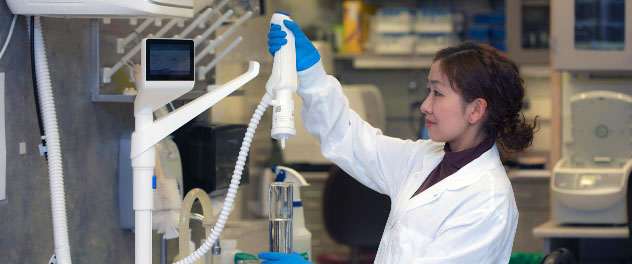In the ever-evolving landscape of medical science, regenerative medicine has emerged as a beacon of hope for patients suffering from debilitating diseases and injuries. The Regenerative Medicine Research Program, a groundbreaking initiative, has made significant strides in harnessing the power of stem cells, tissue engineering, and advanced therapies to transform laboratory discoveries into lifesaving treatments. This remarkable program bridges the gap between scientific innovation and real-world medical breakthroughs, offering new hope to patients worldwide. Regenerative medicine is an interdisciplinary field that focuses on restoring damaged or degenerated tissues and organs to their natural state or enhancing the body’s natural healing capacity. This revolutionary approach employs stem cells, tissue engineering, gene therapy, and biomaterials to regenerate, repair, and replace damaged cells and tissues. The Regenerative Medicine Research Program is at the forefront of this field, bringing together scientists, clinicians, and engineers to push the boundaries of what is possible. These cells are reprogrammed from a patient’s own cells, allowing for personalized regenerative treatments.

Stem cell research is a cornerstone of the program, with scientists working tirelessly to unlock the potential of these versatile cells. Stem cells have the unique ability to develop into various cell types and tissues, making them invaluable in regenerating damaged organs or tissues. Researchers in the program have successfully harnessed the regenerative potential of stem cells in treating a range of conditions, including heart disease, spinal cord injuries, and diabetes. One of the program’s remarkable achievements is the development of patient-specific induced pluripotent stem cells iPSCs. By utilizing a patient’s own cells, the risk of immune rejection is minimized, and the potential for successful regeneration is maximized. This breakthrough has the potential to transform the way we approach organ transplantation, making it safer and more accessible. Tissue engineering is another area in which the Regenerative Medicine Research Program excels. This innovative technique involves creating artificial organs and tissues in the laboratory, using a combination of cells and biomaterials. These engineered tissues can be used for transplantation or to develop models for drug testing and disease research.
The program has made remarkable progress in developing functional, lab-grown organs such as bladders, skin, and even parts of the heart. These developments offer new hope for patients on organ transplant waiting lists, potentially reducing the demand for donor organs. In addition to stem cell and tissue engineering, the program also explores gene therapy as a means of treating genetic diseases. Researchers have been able to use gene-editing techniques to correct faulty genes responsible for conditions like sickle cell anemia and muscular dystrophy. These therapies offer new prospects for patients living with genetic disorders, potentially providing long-term relief and even cures and click here. The collaboration between researchers and clinicians within the Regenerative Medicine Research Program ensures that the most promising laboratory findings are translated into real-world treatments. Clinical trials are conducted to evaluate the safety and efficacy of regenerative therapies, allowing patients to access cutting-edge treatments that were once confined to the realm of scientific imagination. The Regenerative Medicine Research Program has the potential to change the landscape of modern medicine. Patients who were once told that their conditions were untreatable may now find hope in the form of regenerative therapies.